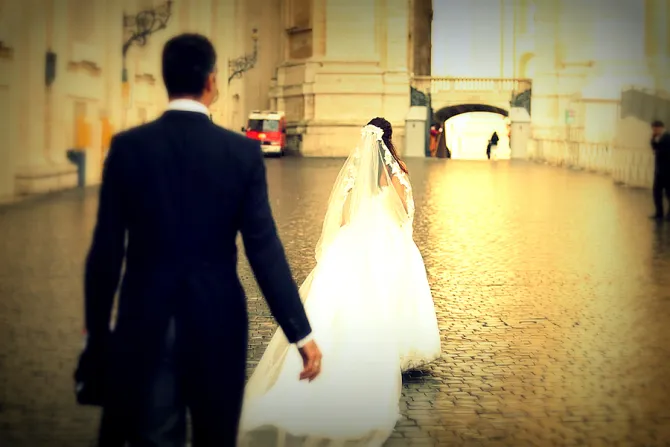Rome, Italy, Dec 6, 2015 / 16:03 pm
Italy is facing a swift and dramatic collapse of the institution of marriage, according to a prominent Italian demographer and statistician.
"We were in bad shape in 2009, and we are worse off – there's no getting around it – five years later," wrote Roberto Volpi in an article last month for the Vatican daily L'Osservatore Romano.
Volpi has directed Italy's public office of statistics and planned the National Center for Documentation and Analysis of Infancy and Adolescence. In 2009, he wrote, 230,613 marriages were celebrated in Italy. In 2014, the figure had fallen to 189,765.
"In the last five years we have lost 40,000, or 18 percent, of marriages. Those who see in the latest ISTAT dates on marriage and divorce a certification of (simply a) crisis of marriage are mistaken," he said.
"Rather, marriage in Italy has truly and fully been routed, its ranks have broken...it is not merely a crisis. And it has been a long time coming."
Volpi's article was noted on Thursday by Italian vaticanista Sandro Magister, who commented that "marriage is racing toward extinction, and not only in nations where secularization has created a desert, but even in a country universally defined as familial and Catholic, such as Italy."
Volpi wrote that in Italy not only has marriage failed to withstand the phenomenon of divorce in recent decades, it has been weakened more so than "in almost all over western European countries."
Italy first allowed divorce in 1970, and Volpi noted that since then, the number of marriages, both religious and civil, have been in free-fall.
"The loss is even greater in the northern region where, today, there is little more than one religious wedding annually per 1,000 inhabitants," he wrote, adding that in Milan the figure is 0.8.
"This is the picture. It further highlights two characteristics: sliding in great strides toward the insubstantiality of religious marriage, but also, at the same time, the incapacity of civil marriage … to attract into its orbit even a modest portion of the 'missing' religious marriages."
Volpi added that "in other words, the institution of marriage itself is mired in Italy in a crisis which seems to have no escape, and this collapse is overwhelmingly borne by religious marriage, destined, at this pace, to literally disappear within the next two or three decades."
He reflected that families are less and less shaped by marriage, either civil or religious, and that thus there is a "very little remembered" second element characterizing the situation of the family in Italy.
"The collapse of marriage did not leave things unchanged when it comes to families, even from a strictly quantitative view. There are many fewer families, today, in Italy."
He reflected that while one may be led to believe that the lack of marriages and children has been made up for by cohabitation, it simply isn't the case. He cited the number (7.7 million in 203) of single-person households.
"The decline of marriage has therefore corresponded, in Italy, to the weakening of family density and the reduction of the family even more conspicuously to its nuclear form."
Volpi also observed that while the average age of a woman at marriage is now almost 33, the average age of childbearing is 31.
"In this reversal of the paradigm in which children follow marriage there is also, if not primarily, a reflection of the extreme separation, now occurring, between sexual relations on the one hand, and reproduction, namely children, on the other."


